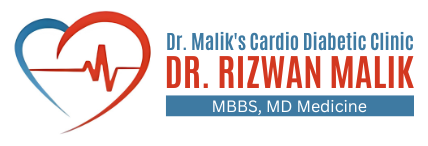1 | What Is the DASH Diet?
The Dietary Approaches to Stop Hypertension (DASH) is a balanced eating plan designed to reduce high blood pressure. It emphasizes fruits, vegetables, whole grains, low-fat dairy, lean proteins, nuts, and healthy fats while lowering sodium, sugars, and saturated fats.
Randomized trials and systematic reviews confirm it consistently lowers blood pressure, reduces LDL cholesterol, and improves metabolic health .
2 | The Science Behind DASH
A. Rich in Blood‑Pressure‑Lowering Nutrients
High in potassium, calcium, magnesium, fiber, and protein, all of which support healthy blood pressure.
B. Sodium Reduction
Targets 1,500–2,300 mg sodium/day, even below typical Indian consumption, yielding further blood pressure reduction .
C. Whole Foods Over Processed
Focuses on nutrient-dense, minimally processed foods rich in antioxidants and healthy fats.
D. Synergy of Food Groups
Compared to single-nutrient diets (e.g., low sodium), whole-diet DASH consistently yields better outcomes
3 | DASH Diet Essentials
| Food Group | Servings (2,000 calories/day) | Indian Options & Notes |
| Fruits | 4–5/day | Banana, papaya, guava, oranges, berries |
| Vegetables | 4–5/day | Leafy greens, carrots, tomatoes, bell peppers |
| Whole Grains | 6–8/day | Whole wheat roti, brown rice, oats, millets |
| Low-fat Dairy | 2–3/day | Curd, paneer, low-fat milk |
| Lean Protein | 6 oz/day (170 g) | Beans, lentils, chicken, fish |
| Nuts & Seeds | 4–5/week | Almonds, walnuts, flax, sesame seeds |
| Fats & Oils | 2–3 tsp/day | Olive oil, groundnut oil, minimal ghee |
| Sweets/Sugar | ≤5/week | Low-sugar desserts, fruit-based sweets |
| Sodium | ≤2,300 mg/day (ideal 1,500 mg) | Use spices instead of salt; avoid packaged foods |
4 | Sample Indian Day on DASH
Breakfast: Oats porridge with nuts & fruit
Mid-morning snack: Curd smoothie (cucumber, mint)
Lunch: Multigrain roti, dal, mixed veggies, salad
Evening snack: Tea (no sugar) + roasted chana
Dinner: Brown rice, rajma/chickpea curry, stir-fried greens
Bedtime: Warm milk with a pinch of turmeric
5 | DASH vs. Typical Indian Diet
- Whole grains ˃ refined carbs
- Fresh produce ˃ packaged foods
- Low-fat dairy ˃ full-fat
- Lean protein & legumes ˃ fatty meats
- Low sodium ˃ high-salt cooking
Transitioning gradually works best for sustainable change.
6 | Tips to Implement DASH in India
- Reduce salt by 25% each week
- Spice up meals with herbs like turmeric, cumin, coriander instead
- Bulk up on vegetables to cover half the plate
- Stock smart snacks: fruits, nuts, seeds
- Cook in batches and use low-sodium recipes
- Monitor sodium via food labels; avoid pickles, chips, canned goods
- Track progress: BP, weight, meals using apps or diary
7 | Health Benefits & Evidence
- Lowers systolic BP by 6–11 mmHg in hypertensive adults
- Reduces LDL cholesterol by ~0.2 mmol/L
- Helps prevent metabolic syndrome, Type 2 diabetes
- May improve mental well-being alongside other outcomes
8 | Staying Committed
- Personalise serving sizes based on calories and activity
- Try seasonal produce for variety
- Invite family involvement for support
- Adapt traditional recipes using whole grains and herbs
- Track BP & check-ups to monitor improvements
- Adjust salt mindfully, not eliminating typical flavors abruptly
The DASH diet is a practical, flexible, and evidence-backed approach for managing hypertension and improving long-term cardiovascular health. By integrating fresh fruits, vegetables, whole grains, lean protein, and minimal salt into everyday Indian cooking, you can effectively reduce blood pressure and enhance overall well-being. Consistency, gradual changes, and personalization are your keys to success.
FAQs
Q1: Can I follow DASH with vegetarian preferences?
Absolutely—lentils, beans, dairy, nuts, and seeds meet protein needs, ensuring full nutritional balance.
Q2: What if I eat out frequently?
Choose salad-based meals, whole-grain breads, grilled proteins, and ask for low-sodium preparation. Drink water instead of sugary beverages.
Q3: How soon will I see BP improvements?
Many experience reductions within 2–3 weeks; full benefits may take 2–3 months of consistent effort.
